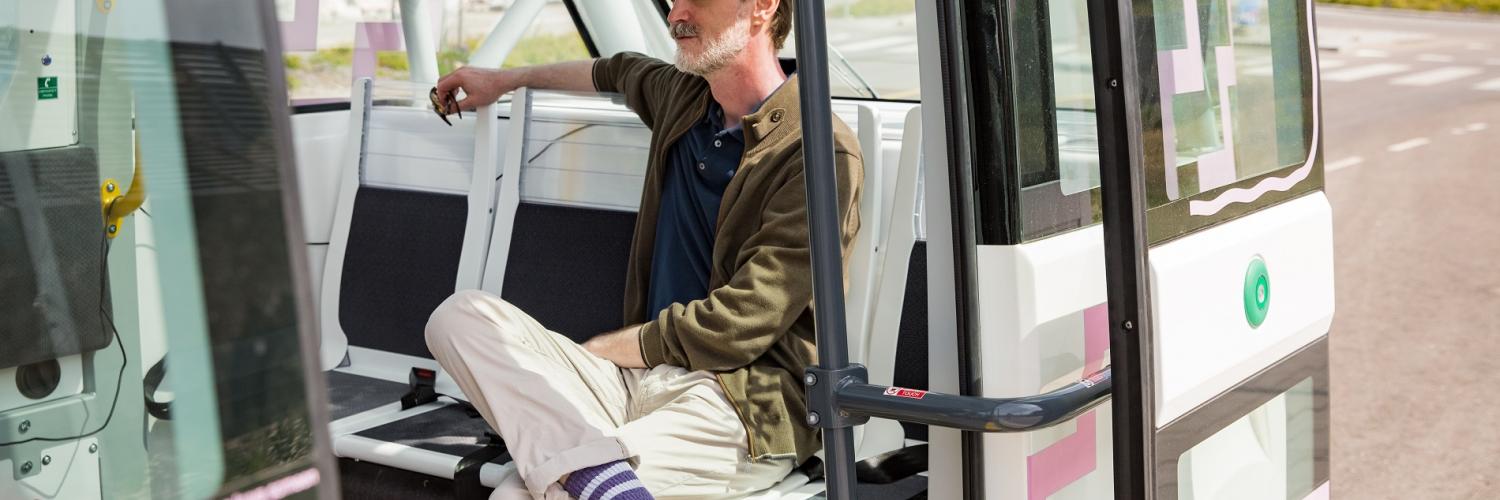Autonomous Shuttles: self-driving, available now
The consensus is out: Self-driving cars are going to change the world in incredible ways.
Everyone is sure it is going to happen, but few can say, "when".
First what is an autonomous vehicle? Gartner defines an AV as a vehicle that can drive itself more or less independently from a starting point to a predetermined destination using various in-vehicle technologies and sensors.
There are all sorts of obstacles personal autonomous transportation has to overcome before the technology makes its way into people's garages.
Learning to avoid numerous hazards, pedestrians, cyclists and other cars, as well as the current lack of autonomy-supporting infrastructure, could become a serious hurdle for personal Autonomous Vehicles (AVs).
International technology, road and legal standards may also be an issue for those who want their own AVs, but these may not apply for autonomous shuttle services, especially on dedicated routes.
Such shuttles can be used in addition to the traditional bus, adding an on-demand option on low-demand routes.
With support from national and city governments, and given a clearly-defined use case, such shuttles are already being deployed.
Usually, an operator is required to monitor the shuttle in its pilot phase. This represents an additional cost but we are heading toward a fully driverless stage along the autonomous journey.
While manufacturers all over the world are trialling self-driving technology on local roads – in what is called a geofenced environment – most experts agree it will be a long time until any AV can be city agnostic.
Instead of learning how to drive anywhere, autonomous shuttles may only need to know the roads of one city, or even only one fixed route, a luxury that personal AV makers cannot afford.
A smaller area of operation also means that supporting infrastructure -
connectivity, marked roads and signage, as well as charging points and remote control support centres - can all be installed.
There are several autonomous shuttles already operated around the world such as the Belgian trials led by VIAS, the Vedecom pods in Versailles (Paris) or the Transdev shared autonomous mobility service in Montreal.
Two French companies, Navya and Easymile, are currently manufacturing amongst the world's most deployed Autonomous Shuttles.
The competition landscape is growing and includes in Europe most of the car manufacturers and more specific firms such as Sensible 4, building weather robust autonomous systems, or the German ZF.
Working with local governments, universities, airports and other locations, their shuttles provide localised rides for up to 15 passengers at a time.
One of the Easymile partnerships is with Arval. This autonomous shuttle will carry up to 15 passengers from the nearest train station to Arval’s French headquarters.
Another example is the pilot led by the Belgian Universities ULB/VUB where students and staff can use the shuttle for a three-minute journey between the student accommodation and the Medicine and Pharmacy Faculty in Brussels.
Most of the shuttles service public roads, running predetermined routes at low speeds. It is not a public transport revolution just yet, but it is a start.
Today the world has no large autonomous shuttle fleets. Once these emerge, the economy of scale and large data samples for learning will allow these services to grow and be adopted much faster.
For now, geofencing and closely monitoring the existing shuttles are the way to go, but once adoption rates rise, the virtual fencing can be gradually lifted to include more and more areas.
NEXT Future Mobility is one of the most ambitious autonomous shuttle projects. The shuttles, called pods, are being designed to merge into one seamless service, attaching and detaching on the fly.
The concept sells the idea of multiple use-cases, with some pods being able to transport goods while others being available as mobile services, like a moving coffee shop.
The pods have already been shown to the public in Dubai, where the pods feature full autonomy on private roads and driver override on public roads, as well as drive-by-wire capabilities.
Another future use case is the e-Palette, which suggests using autonomous vehicles as mobile, on-demand shops and restaurants.
While autonomous shuttles won’t replace private cars very soon, some companies might consider using them for their corporate campus, their parking lots, or as a shuttle to public transport. In Florida, they have even been used to transport medical tests during the coronavirus crisis.
Are you excited to see autonomous shuttles appear on your streets?



